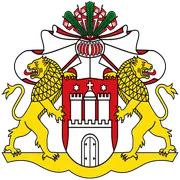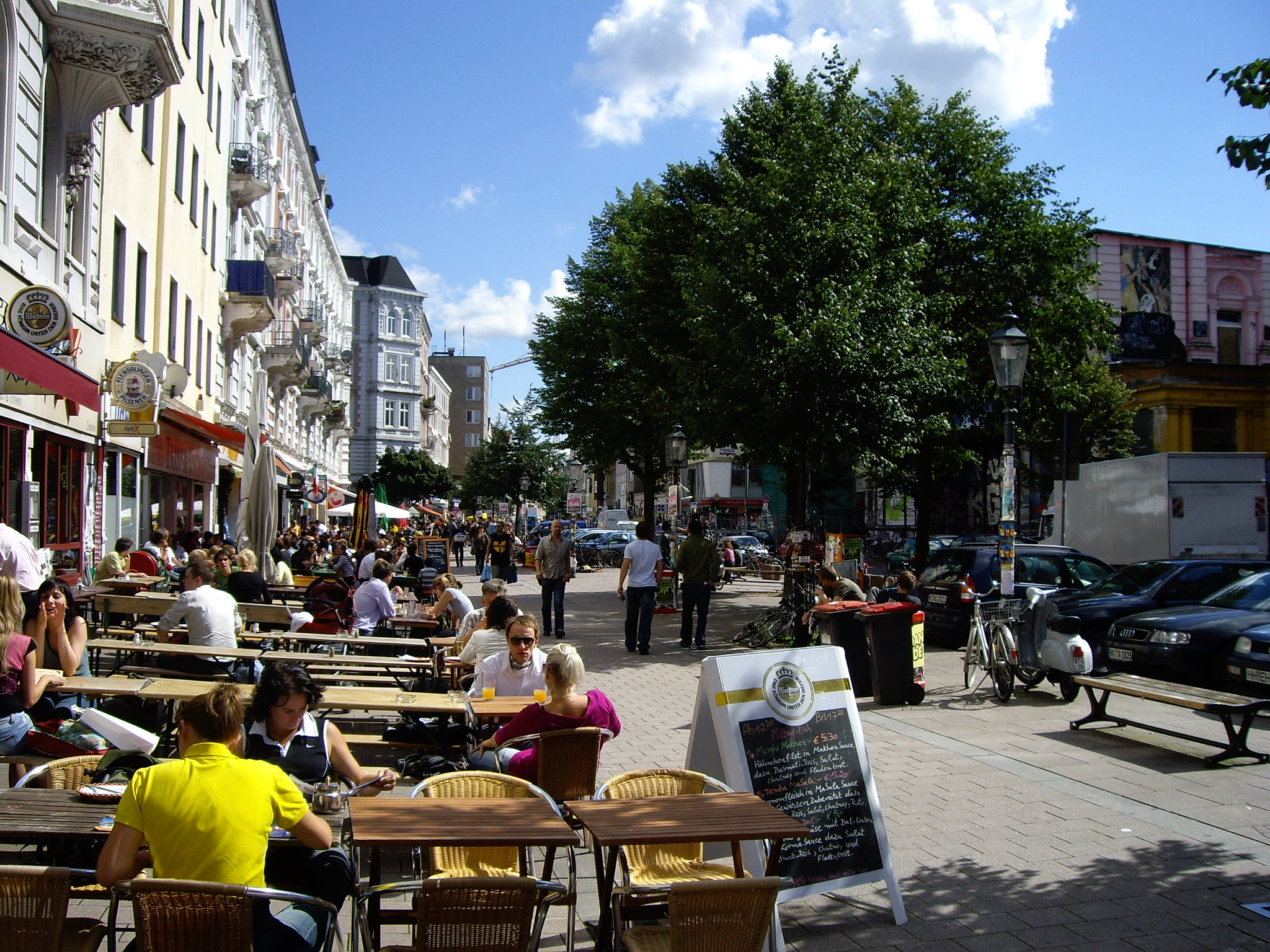Hamburg’s Schanzenviertel, affectionately known as “Schanze” by locals, is a vibrant and eclectic neighborhood that has become a hotbed for street art and urban creativity. This former working-class district has transformed into a trendy area where artists, activists, and free spirits converge, leaving their mark on the city’s landscape through colorful murals, thought-provoking graffiti, and innovative installations.
As you wander through the narrow streets and alleyways of Schanzenviertel, it’s impossible to miss the explosion of colors and designs that adorn the walls, buildings, and even sidewalks. Every corner seems to reveal a new masterpiece, ranging from small stenciled works to massive, building-spanning murals. The street art here isn’t just about aesthetics; it’s a form of expression that often carries powerful social and political messages.
One of the most striking aspects of Schanzenviertel’s street art scene is its diversity. You’ll find everything from abstract designs and cartoon characters to photorealistic portraits and surreal landscapes. This variety reflects the multitude of artists who have left their mark on the neighborhood, each bringing their unique style and perspective to the urban canvas.
Many of the artworks in Schanzenviertel are created by local artists, but the neighborhood has also attracted international talent. Street art festivals and events held throughout the year bring artists from around the world to contribute to the ever-evolving outdoor gallery. This influx of global creativity has helped to establish Schanzenviertel as a must-visit destination for street art enthusiasts and curious travelers alike.
As you explore the area, you’ll notice that the street art isn’t confined to traditional spaces. Artists have gotten creative with their canvases, utilizing everything from electrical boxes and construction barriers to abandoned buildings and even trees. This innovative use of space adds an element of surprise and delight to the urban landscape, encouraging passersby to look at their surroundings with fresh eyes.
One of the most famous spots for street art in Schanzenviertel is the Rote Flora, a former theater that has been occupied by left-wing activists since 1989. The building’s exterior is constantly changing, covered in layers of graffiti, posters, and murals that reflect the political and social issues of the day. It serves as a powerful symbol of the neighborhood’s rebellious spirit and commitment to free expression.
While some of the street art in Schanzenviertel is sanctioned and commissioned, much of it appears spontaneously and organically. This constant flux means that no two visits to the neighborhood are ever quite the same. A mural you admired on one trip might be replaced by something entirely different the next time you visit, adding an element of excitement and unpredictability to the area’s artistic landscape.
The street art scene in Schanzenviertel has not only transformed the visual appearance of the neighborhood but has also played a significant role in its cultural and economic revitalization. The colorful murals and innovative installations have attracted visitors from all over the world, breathing new life into local businesses and fostering a sense of community pride.
As you conclude your exploration of Schanzenviertel’s street art scene, you’ll likely find yourself with a newfound appreciation for this form of urban expression. The neighborhood serves as a testament to the power of art to transform spaces, challenge perspectives, and bring people together. Whether you’re a dedicated street art aficionado or simply someone who appreciates creativity in unexpected places, a stroll through the colorful streets of Schanzenviertel is sure to leave a lasting impression.
Schanzenviertel, located in Hamburg, Germany, remains a vibrant and diverse neighborhood known for its unique blend of counterculture, gentrification, and urban renewal. Despite facing challenges such as rising property prices and social tensions, the area continues to attract residents and visitors with its eclectic mix of independent shops, street art, and lively nightlife. The district’s history of political activism and alternative lifestyles persists, albeit in a more commercialized form, as it balances its rebellious past with modern urban development. Schanzenviertel serves as a microcosm of broader urban trends, highlighting the ongoing struggle between preserving local character and accommodating economic growth in rapidly changing city environments.

